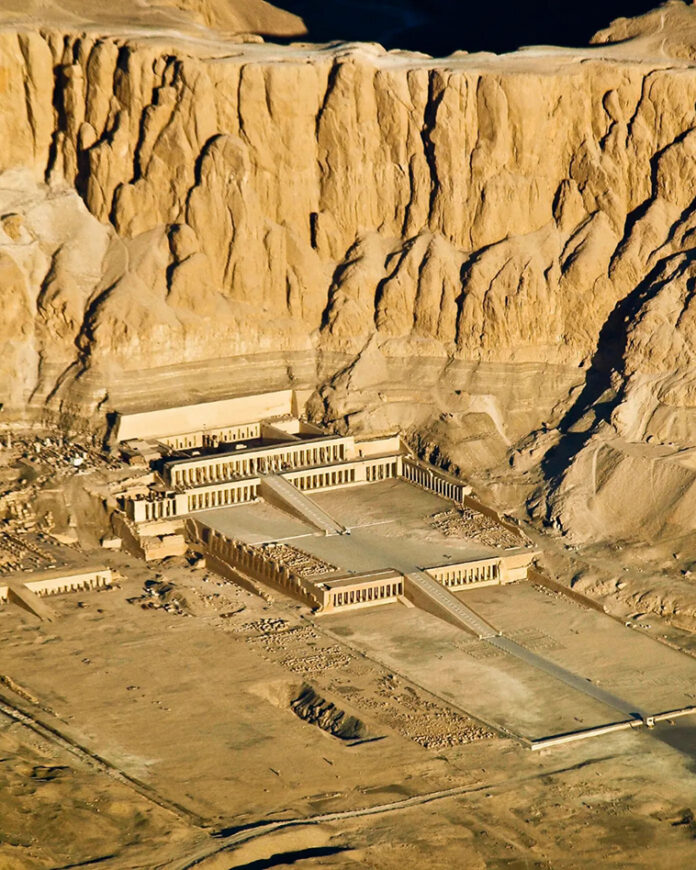The Mortuary Temple of Hatshepsut, also known as “Djeser-Djeseru” or “Holy of Holies,” stands as a testament to the architectural genius of ancient Egypt. Constructed during the reign of Pharaoh Hatshepsut of the Eighteenth Dynasty, this temple is located in Deir el-Bahari, opposite the city of Luxor. It is not only a marvel of ancient engineering but also a symbol of Hatshepsut’s legacy, blending religious, cultural, and political elements into a singular monumental complex. This article delves into the history, design, and significance of this iconic structure.
Hatshepsut’s Architectural Vision

Hatshepsut’s reign marked a period of prolific monument building, with the Mortuary Temple at Deir el-Bahari being her crowning achievement. Situated against the towering cliffs of the Theban Necropolis, the temple’s three massive terraces rise majestically from the desert floor. These terraces lead into the cliffs, where Hatshepsut’s tomb, KV20, is located, capped by the natural pyramid of El Qurn. This unique integration of the temple with its natural surroundings exemplifies the ingenuity of ancient Egyptian architecture.
Design and Layout of the Temple
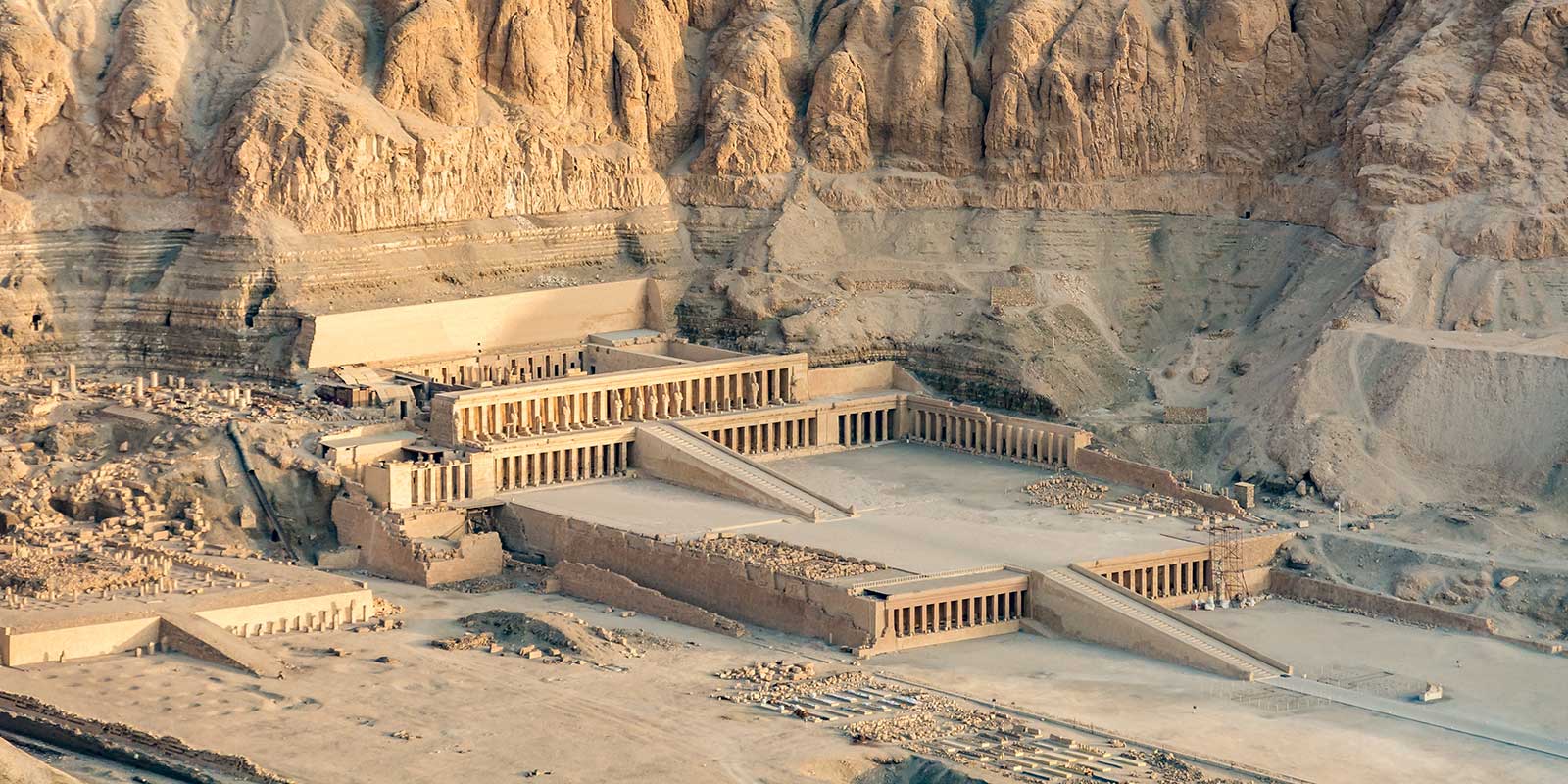
The design of the Mortuary Temple of Hatshepsut was heavily influenced by the nearby Temple of Mentuhotep II, built six centuries earlier. However, Hatshepsut’s temple stands out for its innovative layout and unique features. The main east-west axis of the temple served a dual purpose: it was aligned to receive the barque of Amun-Re during the Beautiful Festival of the Valley, while its north-south axis symbolized the pharaoh’s life cycle, from coronation to rebirth.
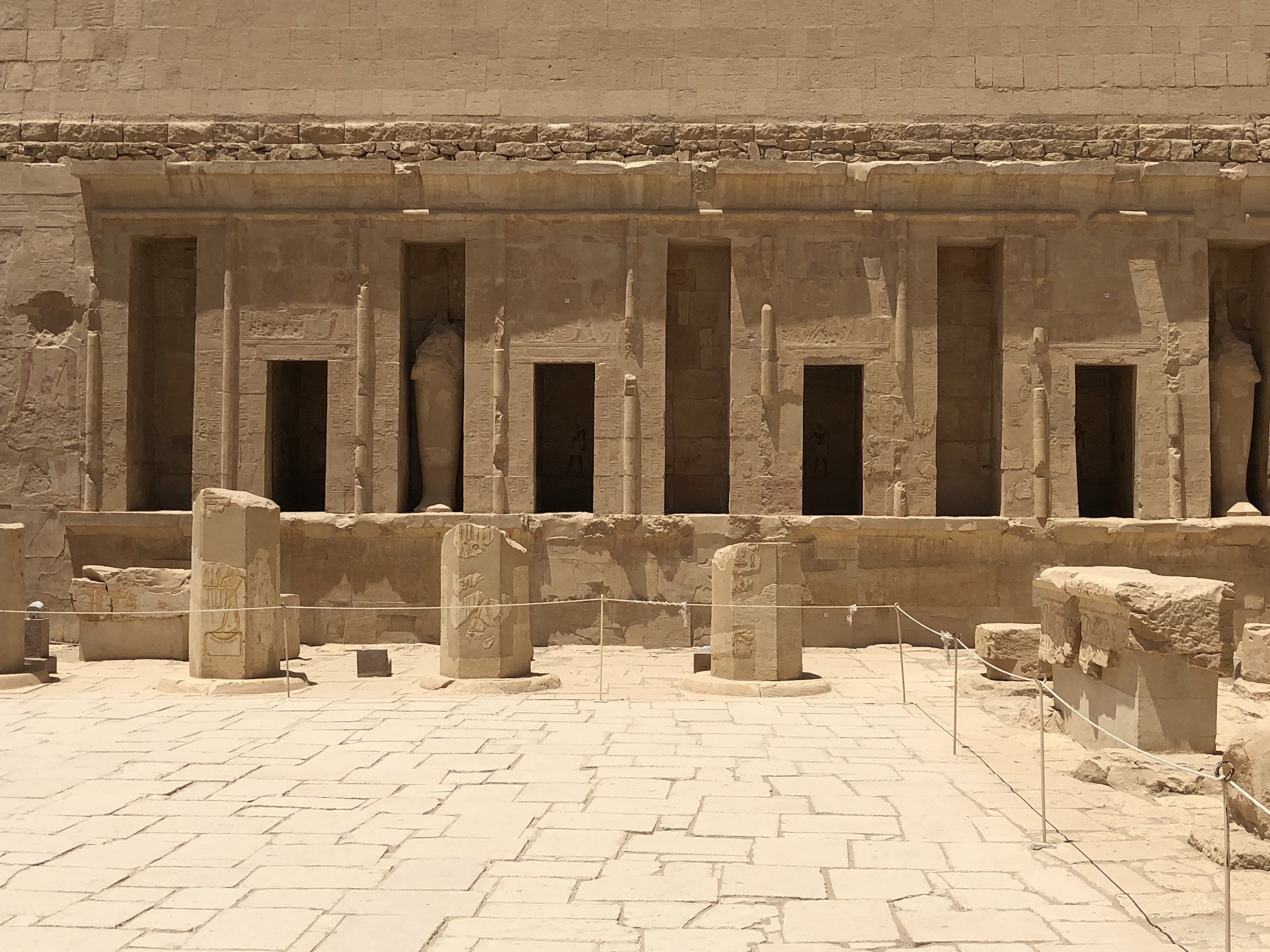
The temple’s complex design includes a sanctuary for the barque of Amun-Re, offering halls for both Hatshepsut and her father, Thutmose I, and shrines dedicated to Hathor and Anubis. The most notable reliefs on the middle terrace depict Hatshepsut’s divine birth and the expedition to the Land of Punt, underscoring her divine right to rule. The entire structure is a blend of mortuary and solar cults, representing the pharaoh’s eternal journey from life to afterlife.
Historical Challenges and Preservation Efforts
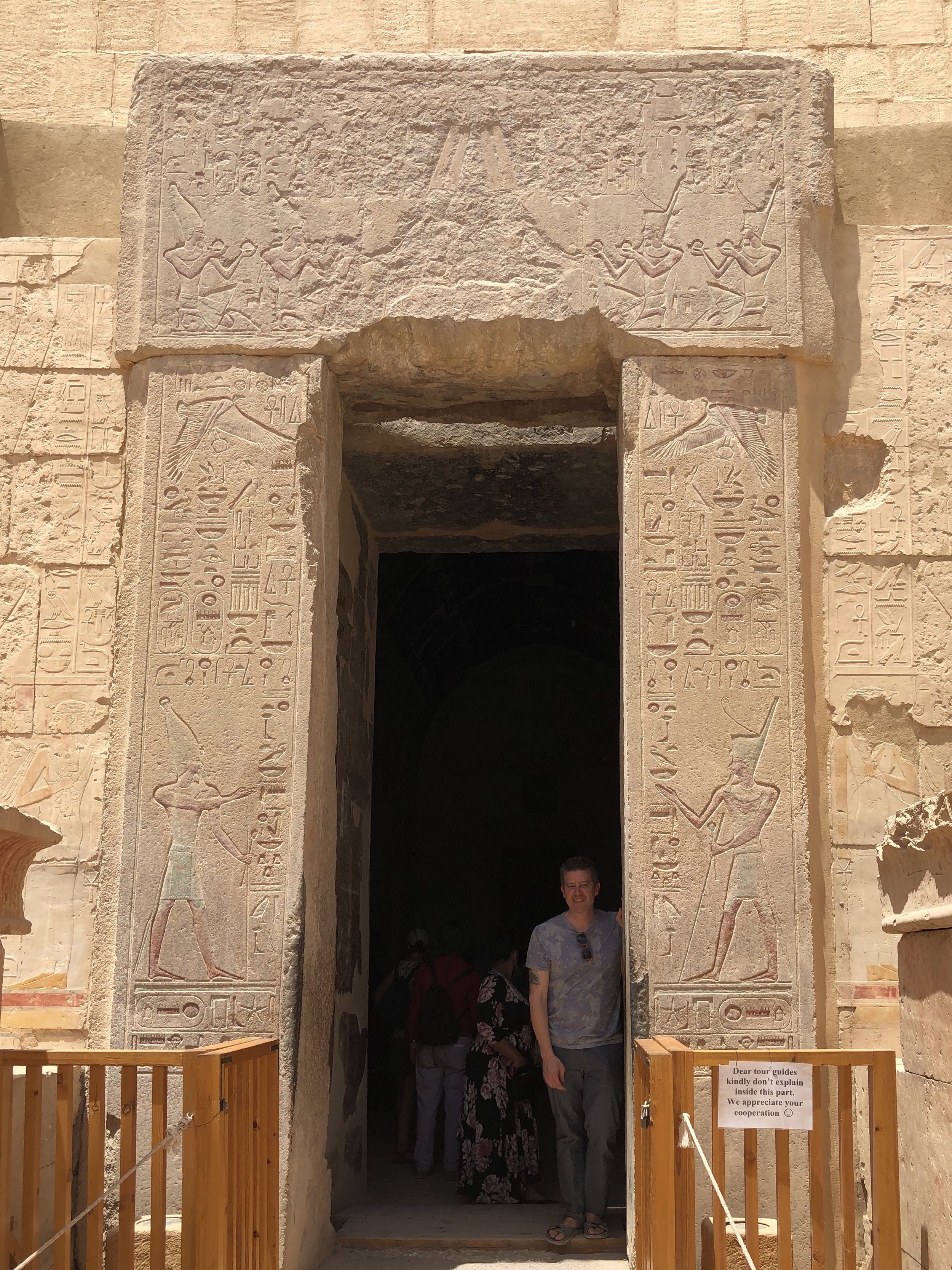
Despite its grandeur, the Mortuary Temple of Hatshepsut has suffered significant damage over the millennia. Two decades after Hatshepsut’s death, her successor, Thutmose III, initiated a campaign to erase her memory, leading to the defacement of many of her images and inscriptions. The temple was further damaged during the Amarna Period when Akhenaten ordered the erasure of all references to the god Amun. Later, an earthquake during the Third Intermediate Period caused additional structural harm.
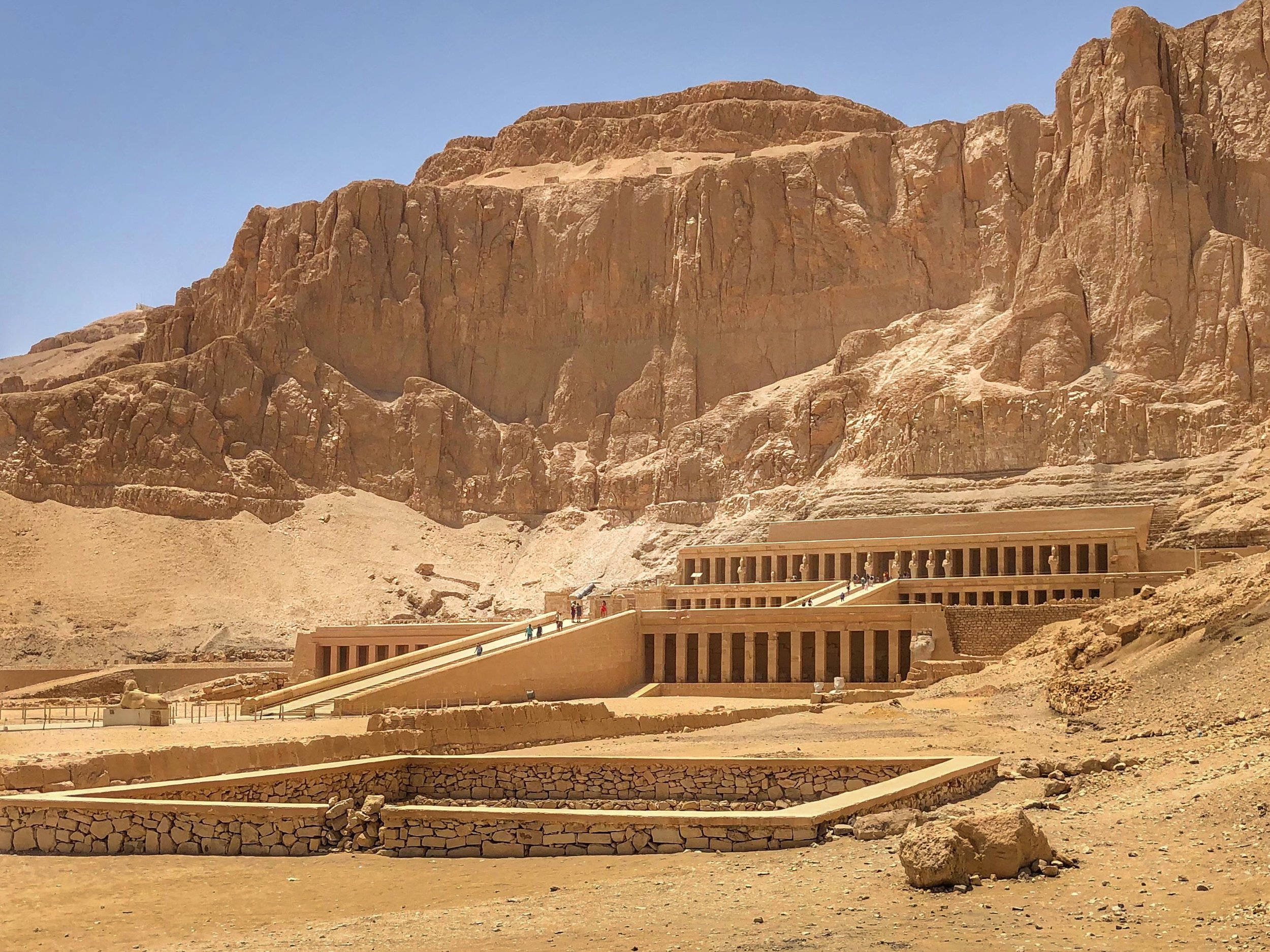
In the Ptolemaic period, the sanctuary of Amun was reconstructed, and a new portico was added. The temple later served as a Coptic Christian monastery, during which images of Christ were painted over the original reliefs. It was not until the modern era that the temple was rediscovered and excavated, with significant restoration efforts undertaken by various archaeological teams, including the Polish Centre of Mediterranean Archaeology. The temple was finally opened to the public in March 2023, after decades of meticulous restoration.
Conclusion
The Mortuary Temple of Hatshepsut is more than just an architectural masterpiece; it is a symbol of the enduring legacy of one of Egypt’s most remarkable pharaohs. Despite the challenges it has faced, the temple continues to stand as a testament to the ingenuity and vision of the ancient Egyptians. Its blend of religious, cultural, and political significance makes it one of the most important monuments in Egypt, offering a glimpse into the grandeur of the New Kingdom and the enduring legacy of Hatshepsut. As visitors walk through its terraces and halls, they are reminded of the timeless beauty and resilience of this ancient wonder.
